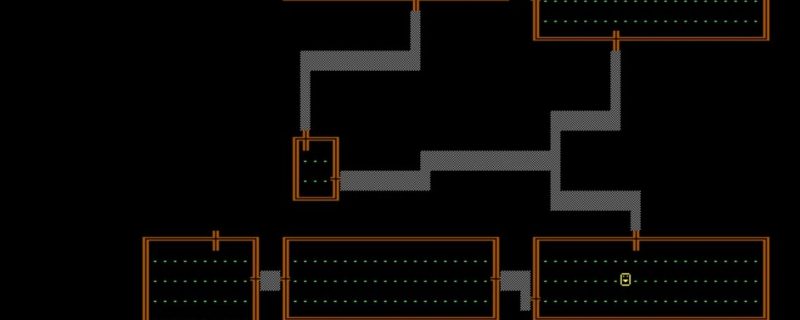
What’s the earliest PC game you remember playing?
There are certainly some classics: Maniac Mansion (1987), SimCity (1989), Wing Commander (1990), Sid Meier’s Civilization (1991) and Doom (1993).
But PC gaming arguably got started back in 1981, when a young Bill Gates co-wrote DONKEY.BAS for the first IBM Personal Computers. The game, which involved moving a car to avoid donkeys loitering on an endless road, was designed to show off the BASIC programming language supplied with Microsoft’s PC-DOS operating system.
As you can see in the video below, it wasn’t the best showcase for what a PC was capable of. But you have to remember that Gates didn’t have much to work with. The IBM PC 5150 rocked a 4.77MHz Intel 8088 processor, 16KB-256KB of base memory and it ran PC-DOS from a boot diskette you slotted into one of its two 5.25-inch floppy drives.
Don’t remember DONKEY.BAS? Perhaps you built your first PC to play X-Wing (1993) or The Secret of Monkey Island (1990)? Or maybe it took the release of Command & Conquer (1995) to bring you into the PC gaming fold? Every gamer’s journey is different. I can trace my own back through some of these classic (and not so classic) DOS games. How many do you remember?
Xenobots (1993)
Admittedly, this wasn’t a great game. But the Novalogic-developed mech combat title (known as Ultrabots in the US) was the first videogame I ever reviewed professionally. It appeared in EMAP’s PC Review magazine, back in those halcyon days when glossy games magazines like PC Zone, PC Format, C&VG and PC Gamer battled each other for readers.
Rebel Assault (1993)
This old Star Wars game might have been a simplistic, on-rails shooter, but it was one of the first CD-ROM games to appear on the PC. In some respects, it was worth trading off full interactivity for the game’s cinematic visuals and stirring music. But it also highlighted the problem with the first CD-based titles — too many cutscenes, not enough actual game.
Battle Chess (1988)
Gaming expectations were low back in the 80s and most people owned a digital version of chess. At least Battle Chess by Interplay tried to inject some fun. It added over 35 different slow and jerky combat animations in a thinly disguised nod to the holographic Dejarik match Chewbacca and R2-D2 play on the Millennium Falcon in Star Wars.
The Sentinel (1986)
Going back even further, The Sentinel was a puzzle game programmed by Geoff Crammond, originally for the BBC Micro. With thousands of 3D levels, the aim of the game was to hop around each checkerboard landscape, avoiding the Sentinel’s Sauron-esque gaze, ultimately gaining enough height so that you could look down on the rotating sentry and defeat it.
Kings Quest III (1986)
Sierra’s Leisure Suit Larry series might be more fondly remembered, but Kings Quest also has its place in gaming history. KQ3 switched the action from King Graham to a new hero called Gwydion. Released on five 5.25-inch disks, the game had over 100 locations and was one of the first to support the 16-colour Enhanced Graphics Adapter (EGA).
BC’s Quest for Tires (1984)
Back in the co-called ‘golden age of gaming’ our needs were simple. Give us a scrolling landscape filled with obstacles (pits, floating platforms, spikes, patrolling nasties) and were generally amused. BC’s Quest for Tires (based on John Hart’s B.C comic strip) laid the foundations for more exciting sideways-scrollers to come.
Rogue (1983)
Countless happy hours were lost exploring Rogue’s procedurally generated ASCII dungeons, collecting gold, improving armour and attacking enemies displayed as a B (bat) or K (Kestrel). This is gaming at its most basic, but it’s Dungeons & Dragons mechanics and ongoing quest for loot are still the basis of many modern games and it remains oddly compelling.
Zork (1981)
What began with a Fortran version of Dungeon (aka Colossal Cave Adventure) on a DEC VAX computer the size of an office filing cabinet, continued on PC in the shape of Infocom’s Zork. The classic text adventure blended book and game, starting with the immortal lines: “You are standing in an open field west of a white house, with a boarded front door. There is a small mailbox here.” A game of adventure, danger and “low cunning” awaited.
That’s just one gaming journey out of millions. What’s yours? Let us know in the comments below.
















